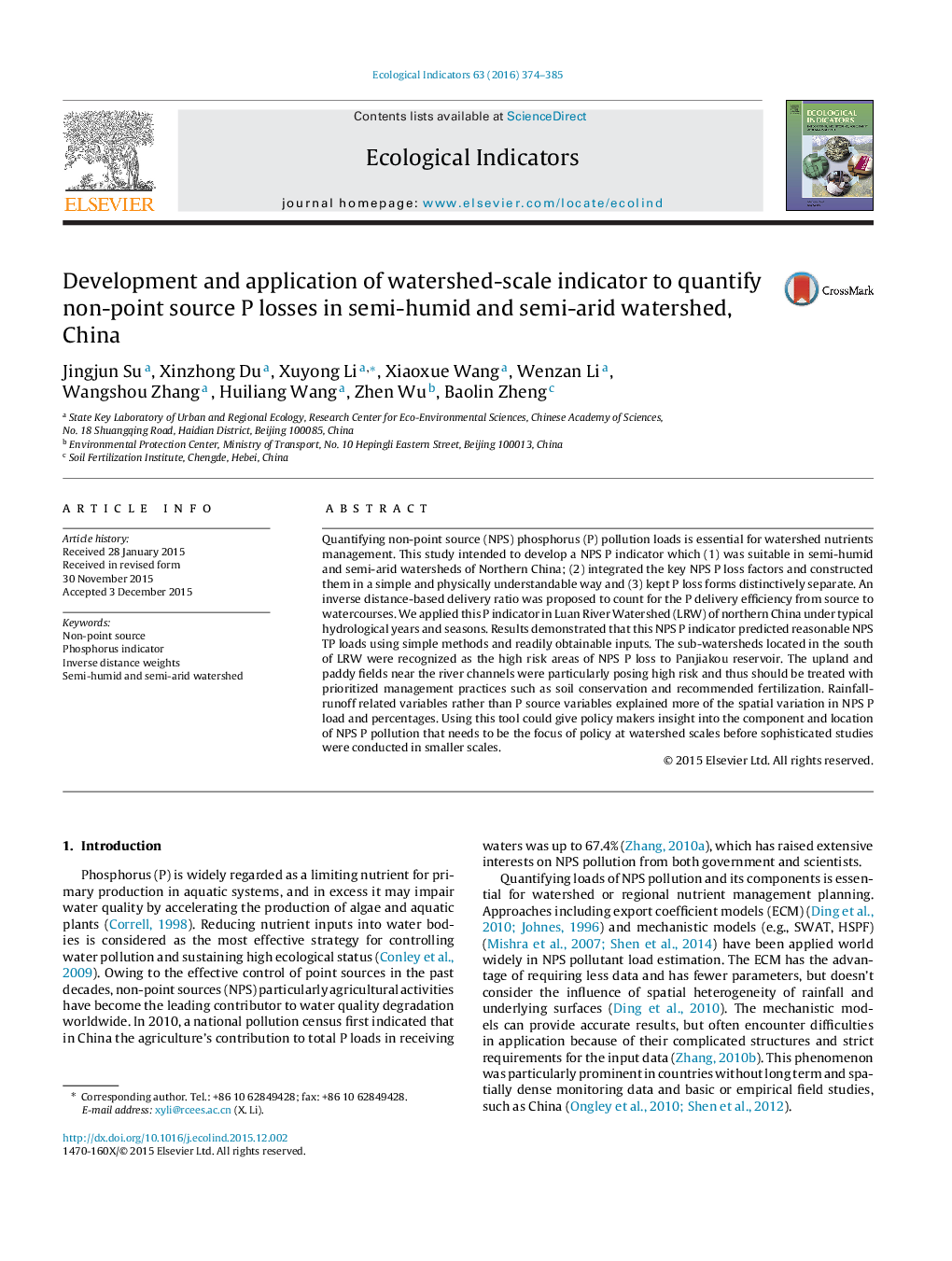| Article ID | Journal | Published Year | Pages | File Type |
|---|---|---|---|---|
| 6293901 | Ecological Indicators | 2016 | 12 Pages |
Abstract
Quantifying non-point source (NPS) phosphorus (P) pollution loads is essential for watershed nutrients management. This study intended to develop a NPS P indicator which (1) was suitable in semi-humid and semi-arid watersheds of Northern China; (2) integrated the key NPS P loss factors and constructed them in a simple and physically understandable way and (3) kept P loss forms distinctively separate. An inverse distance-based delivery ratio was proposed to count for the P delivery efficiency from source to watercourses. We applied this P indicator in Luan River Watershed (LRW) of northern China under typical hydrological years and seasons. Results demonstrated that this NPS P indicator predicted reasonable NPS TP loads using simple methods and readily obtainable inputs. The sub-watersheds located in the south of LRW were recognized as the high risk areas of NPS P loss to Panjiakou reservoir. The upland and paddy fields near the river channels were particularly posing high risk and thus should be treated with prioritized management practices such as soil conservation and recommended fertilization. Rainfall-runoff related variables rather than P source variables explained more of the spatial variation in NPS P load and percentages. Using this tool could give policy makers insight into the component and location of NPS P pollution that needs to be the focus of policy at watershed scales before sophisticated studies were conducted in smaller scales.
Keywords
Related Topics
Life Sciences
Agricultural and Biological Sciences
Ecology, Evolution, Behavior and Systematics
Authors
Jingjun Su, Xinzhong Du, Xuyong Li, Xiaoxue Wang, Wenzan Li, Wangshou Zhang, Huiliang Wang, Zhen Wu, Baolin Zheng,
